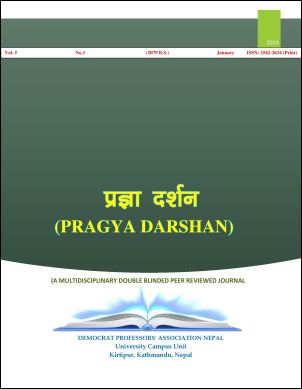Cultural and Sexual Violence on Women: Reading Sidhwa’s Cracking India
DOI:
https://doi.org/10.3126/pdmdj.v5i1.52256Keywords:
savagery, disfiguring, cultural community, consciousness, rehabilitationAbstract
The traumatic history of the partition violence of 1947-48 reveals the causes and consequences of religious conflict among Hindus, Sikhs and Muslims. People biased the social and socio-cultural activities of another religious group and practiced taking revenge against each-other’s religion that finally proved as a cause to divide the nation. The power exercise took side of the gender politics that victimized the women. Pain and suffering of women is emanating from the cases of abduction, seduction, rape and conversion of women of different ages including widows and teenagers from the sides of Hindu-Sikh on the one hand and Muslims on the other hand. Lack of cultural consciousness and the sexual violence, for instance, parading, mutilating, disfiguring, tattooing or branding and amputating the breasts knifing open the womb, raping and killing, of course, are shocking not only for its savagery, but for what it tells us about women as objects in the male constructed society as it is done from whatever the cultural community that belongs to. The violence suffered the people of each-other community but targeted the women more from both the communities as Sikhs seem much closer to the Hindu than the Muslims. A gender based revision of the history of partition of India foregrounds female victimhood and critiques the recovery and rehabilitation operation. Thus this study centers on feminist study with the theoretical support of Aparna Basu, Ritu Menon, Kamla Bhasin, and Urbashi Butalia.




